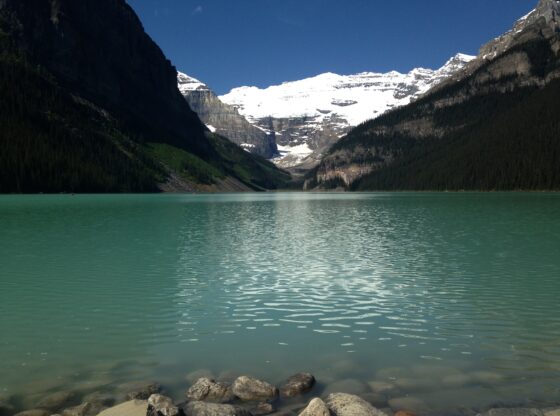By Malcolm Bucholtz, Owner and Distillation Instructor
Prohibition University
http://www.prohibitionuniversity.com/
A Key Ingredient to Brewing
Water is a key ingredient to brewing if we are do it at home or commercially. Turn on your kitchen faucet and water comes out. This simple concept has led us to take water for granted.
Ask a beer drinker what his beer is made from and you will likely hear something about malt barley, specialty malts, various hop varietals, and a certain strain of yeast. Water may or may not receive a mention, because we take it for granted.
The Key Ingredient
My M.Sc. studies at Heriot Watt University have given me a whole new insight into brewing science. Now, if someone asks me what beer is made from, my response will start with the word ‘water’. Water is a key ingredient to brewing if we are do it at home or commercially brewing. It is also key when making mashes for both home distilling and brewing at the craft level, we dare not take water for granted.
Key to understanding water is the cycle that brings it to us. Water evaporates from the Earth’s surface and is taken up into the atmosphere. Once aloft, water molecules interact with tiny dust particles and begin to agglomerate, soon thereafter falling back to Earth as precipitation. Once back on Earth, the water droplets are absorbed into the geological structure under our feet. As water percolates into the Earth, it leaches mineral content from the soil and rocks beneath. Wells, springs, lakes and rivers then bring this groundwater back to surface where the evaporative cycle begins anew.
As I like to explain to people in my Brewing & Distilling Workshops, the geology under your feet in your locale will play a huge role in the quality of your water. This geology will determine what minerals and how many of them are taken up by the water molecules percolating beneath us. This mineral content will then define the characteristics of the water in your locale.
Water Quality
As brewers we should take immediate steps to learn about our water quality. A quick on-line search will usually help you uncover the most recent water quality report for your city or town. If an on-line effort yields no luck, a quick trip to your town office will usually provide you with the data you need.
When you receive the water quality report, there are four key lines to look at: pH, calcium, magnesium and alkalinity.
PH
pH is that well-known measure of acidity and basicity that we all learned about in high school chemistry class. A pH of 7 is deemed neutral. Values less than 7 are acidic and values above 7 are called basic. Yeast cells used in brewing have their own internal pH levels and yeast cells are happiest when exposed to an environment that closely matches their internal pH. This explains why the mashing process should aim to deliver a mash with a pH of around 5.5. Malted grain is in itself acidic. When grain is mixed with water with pH around 7, the net result will be a mash with a pH level sufficient to keep yeast quite happy. But, what if you live in a region where you have higher pH levels in your water? If your instinct tells you to add some acid to your mash to get the pH lower, you are correct. One very effective way of adding extra acid to a mash is to employ dark roasted grains in your mash. Now you can start to appreciate why a certain city in Ireland is so famous for its dark beer. The water in that famous Irish city lends itself perfectly well to the use of copious amounts of dark roasted grain.
Calcium and magnesium
Calcium and magnesium in your water are essential in helping the yeast cells generate healthy daughter cells to give you, the brewer, a vigorous ferment. I like to take steps to raise the Calcium level in my brewing water to around 100 ppm. The general rule that I follow is to add ¼ gram of Calcium Sulphate per liter of mash water which will raise Ca2+ level by 61 ppm. As for Magnesium, there are as many opinions as there are brewers. You will likely find that the Magnesium levels in your water are just fine as they are. If however you have extreme low levels, you will want to add some Epsom salts. Adding ¼ gram per liter of brewing water will impart a further 26 ppm of Magnesium to your water. But, caution is warranted. Do not exceed a total Magnesium level of 30 ppm in your mash water if you want a decent tasting brew.
Alkalinity
Alkalinity is a function of the amount of limestone in the geology under your feet in your locale. There is a simple formula that I like to employ to calculate the Residual Alkalinity. This formula comes about thanks to the work of German brewing scientist Paul Kolbach in the 1950s. The formula is:
Residual Alkalinity (RA) = Alkalinity minus [(Calcium/1.4) + (Magnesium/1.7)].
If this looks daunting, it is not. Just take the values from your water report and plug them into the formula. If you have made any adjustments to your water chemistry, be sure to plug your adjusted values into the formula. If the calculated RA value is high, you then can add dark roasted grains and lean in the direction of dark ales, porters and stouts. If your calculated value is lower, you can lean in the direction of lighter colored ales and perhaps lagers.
The Curve Ball
Just when I thought I had the science of Water is a key ingredient to brewing if we are do it at home or commercially pretty well understood, I was thrown a curve ball this week. Readers of this article who know me will recall that I recently left the City of Regina and moved to the small town of Mossbank, Saskatchewan located a leisurely 40 minute drive south of Moose Jaw, SK. Over the past several months, on our many visits to Mossbank to oversee the build of our new house, we would always have lunch at the very delicious Bent Nail Café. Before long I found myself just drinking water with my lunch and on several occasions I remarked to my wife that the local Mossbank water was actually quite tasty. This all led to wild thoughts about building a small craft brewery in Mossbank. So much so, that I started identifying possible building sites in the town for a brewery. I started taking jugs of Mossbank water back to Regina with me where I brewed darker type ales with great success. We are now settled in Mossbank and for 3 weeks now I have been listening to my wife complain about the poor quality of her morning tea. I dug through my files and found the latest water quality report from the Town of Mossbank. Indeed, Calcium, Magnesium and Alkalinity levels all lend themselves to brewing darker style ales. Why the poor quality of the tea? Then I spotted it – a line item on the water report that I typically have been ignoring on any water report from any city in Canada. The item – Total Dissolved Solids (TDS). In the case of Mossbank, TDS is 50% higher than Regina water, 90% higher than Saskatoon water, and 300% higher than Kelowna water. To explore further, we obtained some Reverse Osmosis (R.O) water from the local Store and brewed tea. We then brewed tea with some Mossbank water that I had passed through a carbon filter. The taste comparison was shocking. The R.O. water gave a tea that had decisive flavor. The Mossbank water gave a tea that can best be described as ‘dead’. The point to all of this is, when inspecting a water report, do not forget to look at the TDS levels. As for my thoughts of a brewery here in Mossbank, yes those thoughts are still front-of-mind, but I now know that I will be relegated to brewing darker style ales and not the cleaner, lighter lagers that I had hoped to base my brewery project on.
I trust this article will inspire you to learn more about water chemistry. There are many good text books on the subject and you will find them at your favorite on-line book seller’s website. Don’t take water for granted. It is a key ingredient in the brewing process and it must be respected.
Happy Brewing
Malcolm Bucholtz


